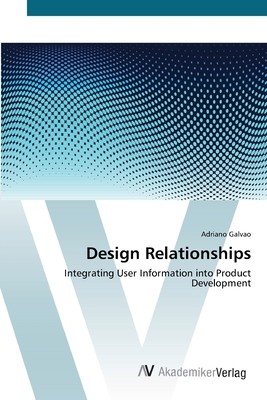
- We will send in 10–14 business days.
- Author: Adriano Galvao
- Publisher: AV Akademikerverlag
- ISBN-10: 3639417356
- ISBN-13: 9783639417357
- Format: 15.2 x 22.9 x 1.2 cm, softcover
- Language: English
- SAVE -10% with code: EXTRA
Reviews
Description
Revision with unchanged content. "Dr. Galvao has produced a well grounded methodology for making and managing design decisions." Tom MacTavish, Vice President, Human Interaction Research, Motorola Labs. Companies focusing on technical innovation are making products that place ever higher demands on users' abilities to understand and operate them. In-novation fails and resources are lost when products do not match user-inter-action requirements. This book examines how to design user-product rela-tionships into the core of a product's architecture, based on the infor-mation from product functions and user studies. Introduced is a Func-tion-Task-Interaction methodology that identifies, represents and quanti-fies these relationships, and is supported by three case studies and an infor-mation system. The methodology presented is based on the concept of "affor-dances," and the first academic paper on it received the XEROX-ASME Best Paper Award at the 2005 Design Theory and Methodology Conference. This book is intended for professionals, researchers and students in the fields of design, engineering, architecture and marketing.
EXTRA 10 % discount with code: EXTRA
The promotion ends in 20d.21:46:25
The discount code is valid when purchasing from 10 €. Discounts do not stack.
- Author: Adriano Galvao
- Publisher: AV Akademikerverlag
- ISBN-10: 3639417356
- ISBN-13: 9783639417357
- Format: 15.2 x 22.9 x 1.2 cm, softcover
- Language: English English
Revision with unchanged content. "Dr. Galvao has produced a well grounded methodology for making and managing design decisions." Tom MacTavish, Vice President, Human Interaction Research, Motorola Labs. Companies focusing on technical innovation are making products that place ever higher demands on users' abilities to understand and operate them. In-novation fails and resources are lost when products do not match user-inter-action requirements. This book examines how to design user-product rela-tionships into the core of a product's architecture, based on the infor-mation from product functions and user studies. Introduced is a Func-tion-Task-Interaction methodology that identifies, represents and quanti-fies these relationships, and is supported by three case studies and an infor-mation system. The methodology presented is based on the concept of "affor-dances," and the first academic paper on it received the XEROX-ASME Best Paper Award at the 2005 Design Theory and Methodology Conference. This book is intended for professionals, researchers and students in the fields of design, engineering, architecture and marketing.


Reviews